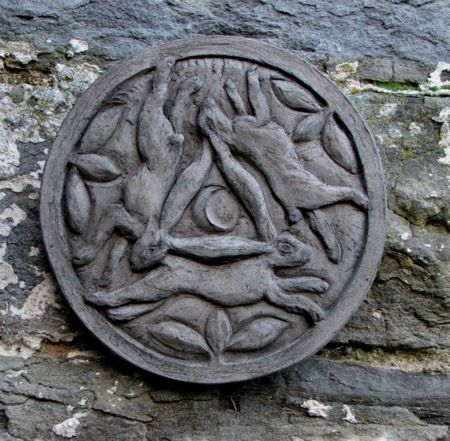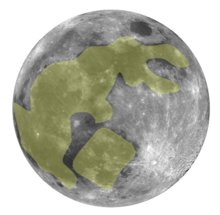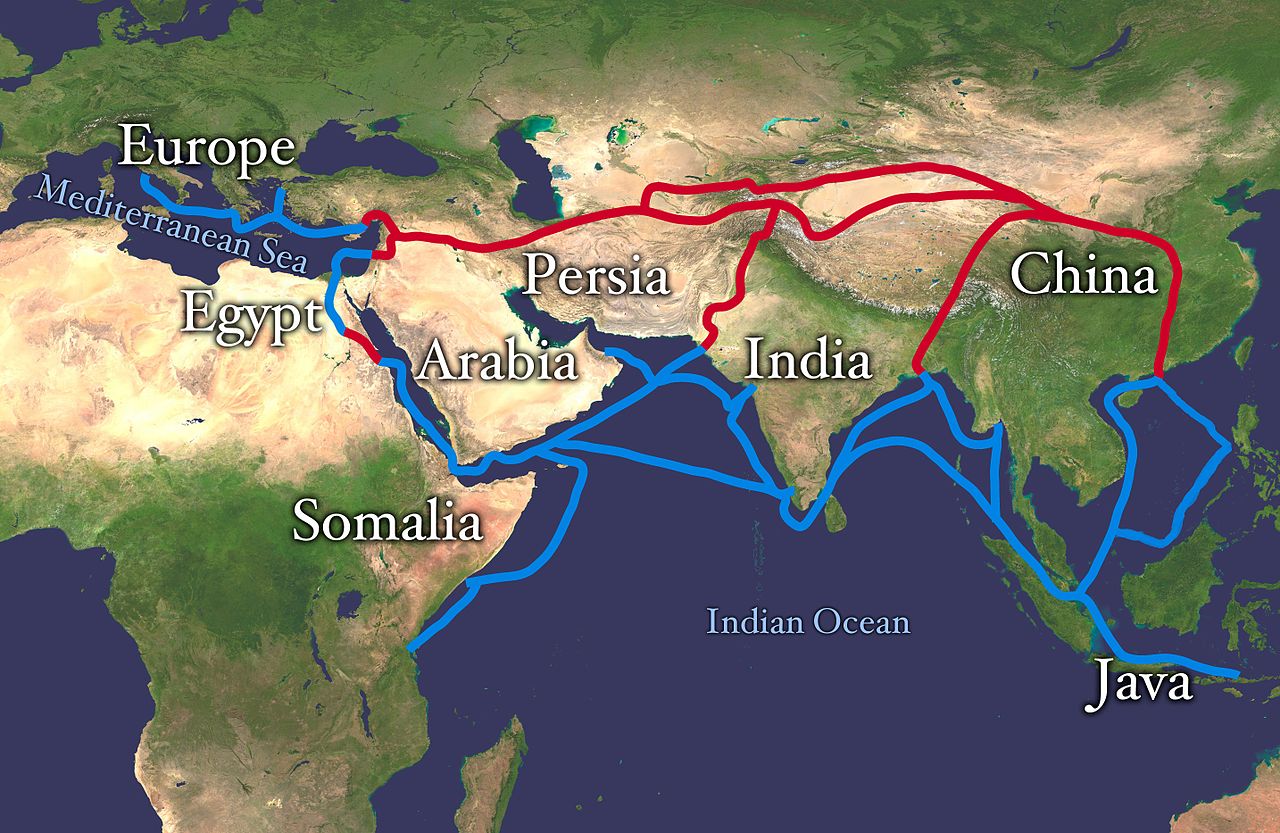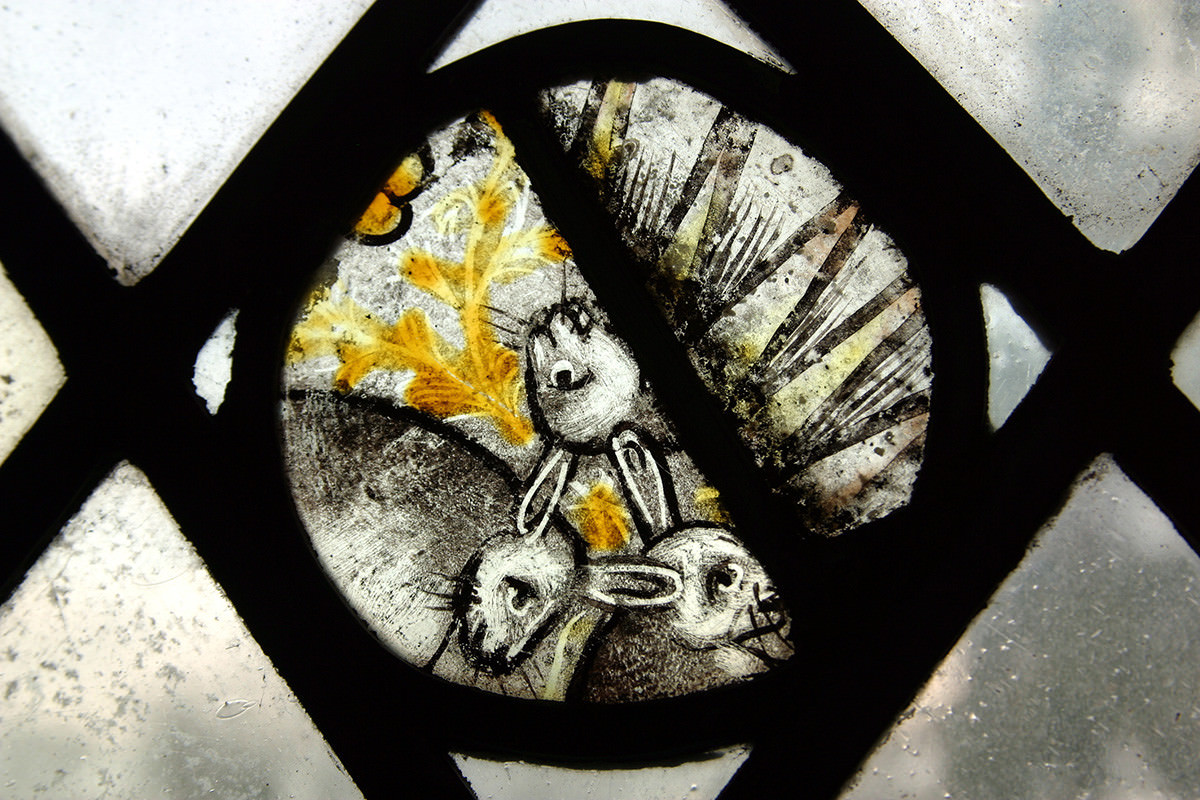It looks like you're using an Ad Blocker.
Please white-list or disable AboveTopSecret.com in your ad-blocking tool.
Thank you.
Some features of ATS will be disabled while you continue to use an ad-blocker.
4
share:
Introduction
Most of us grew up with fictional character named none other than the "white rabbit". Most of us can relate to the story "Alice's Adventures in Wonderland", where he appears at the very beginning of the book, in chapter one, wearing a waistcoat, and muttering "Oh dear! Oh dear! I shall be too late!"
I always wondered where the symbolic started, the parable to the story, why? But more to, when?
----
Three Hares
The three hares is a circular motif appearing in sacred sites from the Middle and Far East to the churches of Devon, England (as the "Tinners' Rabbits"), and historical synagogues in Europe. It is used as an architectural ornament, a religious symbol, and in other modern works of art or a logo for adornment, jewelry and a coat of arms on an escutcheon. It is viewed as a puzzle, a topology problem or a visual challenge, and has been rendered as sculpture, drawing, and painting.

Some claim that the Devon name, Tinners' Rabbits, is related to local tin miners adopting it. The mines generated wealth in the region and funded the building and repair of many local churches, and thus the symbol may have been used as a sign of the miners' patronage.

The symbol features three hares or rabbits chasing each other in a circle. Like the triskelion, the triquetra, and their antecedents (e.g., the triple spiral), the symbol of the three hares has a threefold rotational symmetry. Each of the ears is shared by two hares, so that only three ears are shown. It is thought to have a range of symbolic or mystical associations with fertility and the lunar cycle.
--
Origins in Buddhism
The earliest occurrences appear to be in cave temples in China, dated to the Sui dynasty (6th to 7th centuries). The hares have been said to be "A hieroglyph of 'to be' " and often appeared in Lotus motifs.
The Three Hares appear on 13th century Mongol metalwork, and on a copper coin, found in Iran, dated to 1281.
Another appears on an ancient Islamic-made reliquary from southern Russia. Another 13th or early 14th century box, later used as a reliquary, was made in Iran under Mongol rule, and is preserved in the treasury of the Cathedral of Trier in Germany. On its base, the casket has Islamic designs, and originally featured two images of the three hares.
Silk Road

One theory pertaining to the spread of the motif is that it was transported from China across Asia and as far as the south west of England by merchants travelling the silk road and that the motif was transported via designs found on expensive Oriental ceramics. This view is supported by the early date of the surviving occurrences in China. However the majority of representations of the three hares in churches occur in England and northern Germany. This supports a contrary view that the Three Hares occurred independently as English or early German symbols.

Other occurrences in England include floor tiles at Chester Cathedral, stained glass at Long Melford, Suffolk and a ceiling in Scarborough, Yorkshire.
The White Rabbit of Inaba - Crunchyroll [ Free ]
--
Conclusion
Well, i did find the source i believe, its in the mystic department. The story is the same as the mythological version of Chronus and Zeus, and its impact on our cultural heritage. But all i can say, follow the rabbit to its home, if you find, you unlock the mysteries of the universe. Was it a lunar cycle as one of the thesis, well, i dont know, i do know its a cycle, what happened to the symbolic when it arrived in Europe might have changed into something else. I wasnt interested in the modern tale, i wanted the origin, and i knew i would end up in Buddhism.
Source
Alice in Wonderland - IMDB
Moon Rabbit - Wikipedia
Jataka Tales - Wikipedia
Konjaku Monogatarishu - Wikipedia
Three Hares - Wikipedia
Silk Road - Wikipedia
NewScientist
Most of us grew up with fictional character named none other than the "white rabbit". Most of us can relate to the story "Alice's Adventures in Wonderland", where he appears at the very beginning of the book, in chapter one, wearing a waistcoat, and muttering "Oh dear! Oh dear! I shall be too late!"
I always wondered where the symbolic started, the parable to the story, why? But more to, when?
----
Three Hares
The three hares is a circular motif appearing in sacred sites from the Middle and Far East to the churches of Devon, England (as the "Tinners' Rabbits"), and historical synagogues in Europe. It is used as an architectural ornament, a religious symbol, and in other modern works of art or a logo for adornment, jewelry and a coat of arms on an escutcheon. It is viewed as a puzzle, a topology problem or a visual challenge, and has been rendered as sculpture, drawing, and painting.

Some claim that the Devon name, Tinners' Rabbits, is related to local tin miners adopting it. The mines generated wealth in the region and funded the building and repair of many local churches, and thus the symbol may have been used as a sign of the miners' patronage.

The symbol features three hares or rabbits chasing each other in a circle. Like the triskelion, the triquetra, and their antecedents (e.g., the triple spiral), the symbol of the three hares has a threefold rotational symmetry. Each of the ears is shared by two hares, so that only three ears are shown. It is thought to have a range of symbolic or mystical associations with fertility and the lunar cycle.
--
Origins in Buddhism
The earliest occurrences appear to be in cave temples in China, dated to the Sui dynasty (6th to 7th centuries). The hares have been said to be "A hieroglyph of 'to be' " and often appeared in Lotus motifs.
The Three Hares appear on 13th century Mongol metalwork, and on a copper coin, found in Iran, dated to 1281.
Another appears on an ancient Islamic-made reliquary from southern Russia. Another 13th or early 14th century box, later used as a reliquary, was made in Iran under Mongol rule, and is preserved in the treasury of the Cathedral of Trier in Germany. On its base, the casket has Islamic designs, and originally featured two images of the three hares.
Silk Road

One theory pertaining to the spread of the motif is that it was transported from China across Asia and as far as the south west of England by merchants travelling the silk road and that the motif was transported via designs found on expensive Oriental ceramics. This view is supported by the early date of the surviving occurrences in China. However the majority of representations of the three hares in churches occur in England and northern Germany. This supports a contrary view that the Three Hares occurred independently as English or early German symbols.

Other occurrences in England include floor tiles at Chester Cathedral, stained glass at Long Melford, Suffolk and a ceiling in Scarborough, Yorkshire.
The White Rabbit of Inaba - Crunchyroll [ Free ]
--
Conclusion
Well, i did find the source i believe, its in the mystic department. The story is the same as the mythological version of Chronus and Zeus, and its impact on our cultural heritage. But all i can say, follow the rabbit to its home, if you find, you unlock the mysteries of the universe. Was it a lunar cycle as one of the thesis, well, i dont know, i do know its a cycle, what happened to the symbolic when it arrived in Europe might have changed into something else. I wasnt interested in the modern tale, i wanted the origin, and i knew i would end up in Buddhism.
Source
Alice in Wonderland - IMDB
Moon Rabbit - Wikipedia
Jataka Tales - Wikipedia
Konjaku Monogatarishu - Wikipedia
Three Hares - Wikipedia
Silk Road - Wikipedia
NewScientist
edit on
20161211 by tikbalang because: image
a reply to: tikbalang
Don't forget to bear in mind the difference between hares and rabbits.
The rabbit lives a communal life underground.
The hare lives a solitary life above ground.
(Then, of course, there is Bugs Bunny, who lives a solitary life underground and doesn't really know which species he belongs to)
Don't forget to bear in mind the difference between hares and rabbits.
The rabbit lives a communal life underground.
The hare lives a solitary life above ground.
(Then, of course, there is Bugs Bunny, who lives a solitary life underground and doesn't really know which species he belongs to)
new topics
-
Paradox of Progress
Ancient & Lost Civilizations: 2 hours ago -
Joe Biden gives the USA's Highest Civilian Honor Award to Hillary Clinton and George Soros.
US Political Madness: 4 hours ago -
Winter Storm
Fragile Earth: 5 hours ago -
Biden Face Planted Somewhere
Politicians & People: 7 hours ago -
A great artist and storyteller, for kids of all ages
General Entertainment: 7 hours ago -
What Is 'Quad Demic'? Mask Mandate Returns In These US States
Diseases and Pandemics: 11 hours ago
top topics
-
Joe Biden gives the USA's Highest Civilian Honor Award to Hillary Clinton and George Soros.
US Political Madness: 4 hours ago, 13 flags -
What Is 'Quad Demic'? Mask Mandate Returns In These US States
Diseases and Pandemics: 11 hours ago, 10 flags -
Volcano Watch 2025
Fragile Earth: 13 hours ago, 8 flags -
The Future of fashion .
Social Issues and Civil Unrest: 12 hours ago, 8 flags -
Winter Storm
Fragile Earth: 5 hours ago, 7 flags -
Bin Cyber Junk…
Short Stories: 12 hours ago, 6 flags -
Biden Face Planted Somewhere
Politicians & People: 7 hours ago, 5 flags -
A great artist and storyteller, for kids of all ages
General Entertainment: 7 hours ago, 4 flags -
Paradox of Progress
Ancient & Lost Civilizations: 2 hours ago, 4 flags -
The Undertones - Teenage Kicks
Music: 13 hours ago, 3 flags
4
